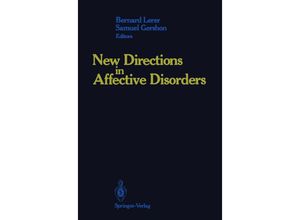This book is presented as a 1989 update on the task set by Robert Burton in his Anatomy
ofMelancholy published in 1621. Burton's treatise addressed ques tions regarding depression
which are still highly relevant today: . . . What is it with all the kinds causes symptoms
prognostickes and several cures ofit. . . . These remain the core issues in affective disorders
notwithstanding the remarkable progress that has been made in addressing them. New Directions
in Affective Disorders sets out to provide an overviewofwhat has been achieved with particular
emphasison developing trends and novel initiatives in bothfundamental research and treatment.
The overriding objective of the book is to integrate significant contributions from basic and
clinical science into a comprehensive format which will be of value to both clinicians and
researchers. Intensive interest in affective illness isan inevitableconsequenceofthe frequency
with which these disorders occur. Depression is the most common psychiatric condition
affecting as many as 50%ofpeople in Western countries at some time in their lives. National
Institute ofMental Health Statistics estimate that 15% of adults between 18 and 74 years ofage
may be suffering from serious depressive disorders in any given year. Depression is a serious
condition with a high mortality. A suicide rate ofapproximately 20 000 deaths per year as a
result of this illness is almost certainly a conservative estimate.



